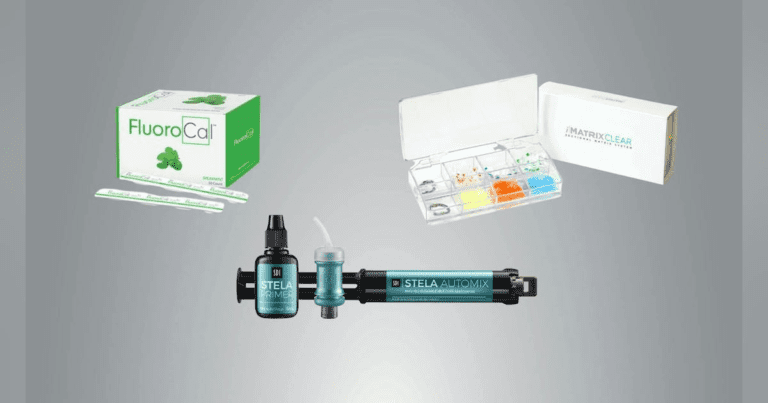FluoroCal 5% sodium fluoride varnish with TCP
Hypersensitivity is still a problem faced by dentists and hygienists almost every day. And, although I’ve written about FluoroCal before, this precious product has now added two new flavors: bubblegum and green apple. Dental hypersensitivity is caused by exposed dental tubules. Accordingly, a common treatment is the application of 5% sodium fluoride varnishes, which aim to occlude and seal these tubules and stimulate the formation of fluorapatite. Overall, they generally help to varying degrees. Bisco introduced a fluoride varnish called FluoroCal, which combines fluoride and tricalcium phosphate (TCP) in a sustained-release formulation (over 24 hours). Research shows fluoride and TCP release is greater than leading competitors. This combination provides the patient with sensitivity protection along with acid resistance and enamel strengthening. Almost immediately, the patient will feel relief as the material penetrates and seals the exposed dentin tubules. Now there’s a variety of delightful flavors: peppermint, bubblegum and green apple (all xylitol sweeteners) that are quick and easy to brush. Another feature of this varnish is that although it is white in color, it blends aesthetically with the patient’s dentition. Finally, FluoroCal is made without gluten, dairy or milk proteins, making it suitable for patients who have allergies. FluoroCal is a product that will help us treat patients suffering from dental hypersensitivity easily and effectively.
Stela Self-Cure Composite & Primer
I have practiced enough to remember to use alloy as my primary restoration material. It was durable and easy to use, requiring no shade matching, no adhesive resin, no layers and no light curing. Today, Stela offers us the same benefits in a composite resin available in capsule and flowable syringe form. SDI boldly advertises it as an “amalgam alternative,” which may be tempting for those who have yet to make the transition to resin-bonded dentistry. Stela is used without mechanical retention, without photopolymerization, in one general shade and polymerizes to any depth. And, while the alloy achieved about 37% strength after one hour, the Stela reaches 90% in the same time period. Both company and independent research show it has greater compressive strength than other leading composite bulk-fill restoratives. Bond strength is further enhanced when used in conjunction with Stela Primer (total application time is only 15 seconds and requires no etching, sanding or light curing), designed to be compatible with Stela as both contain MDP monomer which protects against sensitivity and provides a more durable restoration. Stela Primer penetrates dentin for a mechanical bond, while Stela composite chemically bonds to the primer for a stronger chemical bond in just two steps. Stela’s unique, patented chemistry initiates hardening towards the tooth structure, thereby creating a gap-free interface resulting in a homogeneously hardened dentin-to-finish restoration. Stela has high compressive strength, low shrinkage with high flexural strength, good light transmission, low wear and shines well. It also contains fluoride, calcium and strontium. Overall, I think the Stela Self-Cure Composite and Primer are stellar!


